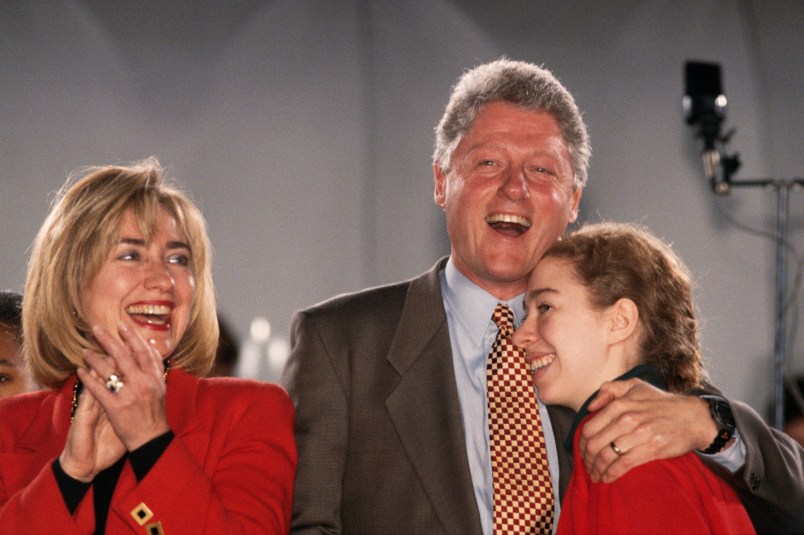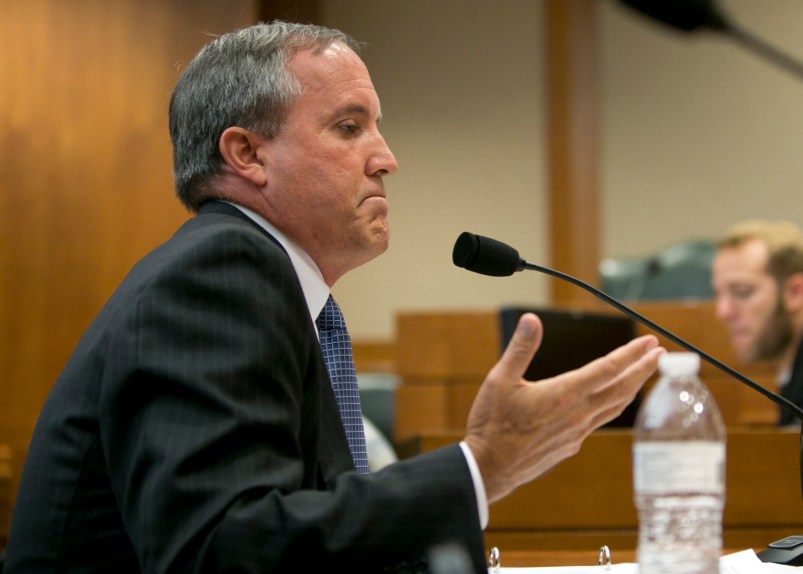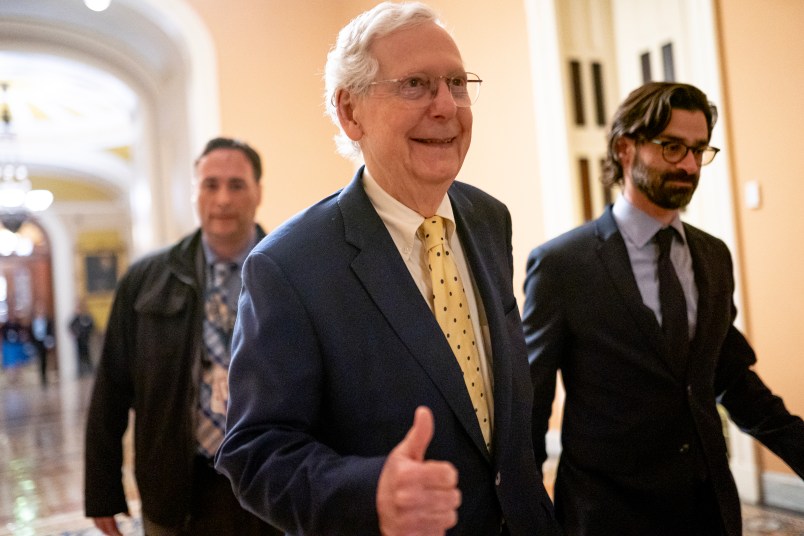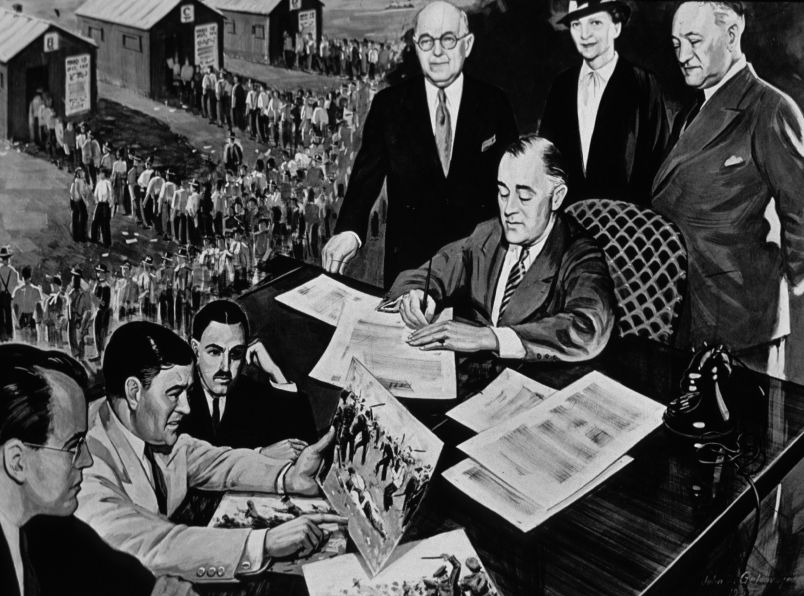The following is an excerpt from Michael D’Antonio’s book, “The Hunting of Hillary: The 40-Year Campaign to Destroy Hillary Clinton,” out July 28. It is part of TPM Cafe, TPM’s home for opinion and news analysis.
Powerful women aren’t given much leeway. Express a little emotion—any emotion—and you risk being written off as unserious. Show too little and you’re a bitch. The stereotypes are convenient for journalists and can be supported by selecting a few anecdotes or impressions and shading them just so. The same is true when it comes to couples. No one knows what happens inside a relationship, but outsiders still make guesses based on their own experiences and expectations.
After the 1992 election, The New York Times sent writer Michael Kelly to examine the Clintons. On the day before Clinton’s first inauguration, Kelly published an article proposing that Bill and Hillary Clinton were like-minded people whose main problem, as a couple, might be that they were a little too close. They were “the man and woman who ran Arkansas,” noted Kelly before he leaned on some loose clichés intended to capture them in essence. He was a liberal who made himself look more moderate. She was a “slightly hippieish, feminist lawyer,” providing the hard work and practical strategy behind most of her husband’s successes in Little Rock.
Superficially flattering, the portrait of the First Couple was a setup where Hillary was concerned. Both the “hippieish feminist” and the woman-behind-the-man stereotypes were loaded with negatives. However, the Clintons were in public favor at the time, with polls indicating they were both well liked. As the president’s first term began, they proceeded as if they truly intended to demonstrate a different kind of relationship from what Americans had seen before in the White House.
As Boston Globe columnist Ellen Goodman explained it in a TV interview, the Clintons were confronting Americans with a new image for a married woman—namely, the “independent wife” who would be both a spouse and a professional power. Five days into his presidency, Bill Clinton announced that the First Lady would lead the Task Force on National Health Care Reform, which would be given one hundred days to develop the outlines of legislation that would address the problem of rising costs, increasing insurance premiums, and a growing number of people without any coverage at all.
Given the vast complexity of the system, which had defied previous efforts at reform, Clinton’s charge—especially the one-hundred-day deadline—was obviously unrealistic. And in choosing his wife to lead the effort, he demonstrated a naïveté that was similarly notable. Hillary had undertaken big assignments for him in Arkansas, and she was, he said, “better at organizing and leading people from a complex beginning to a certain end than anybody I’ve ever worked with in my life.” Add her education, her work for the Children’s Defense Fund, and her experience talking with voters in the past eighteen months and the First Lady was quite qualified to lead a task force that would be staffed by professionals and filled with experts. However, she was also the president’s wife, and some Americans were concerned about the First Spouse having a significant role in any area of policy. The two previous first ladies had confined themselves to safer issues.
Nancy Reagan urged children to “Just Say No” to illegal drugs, and Barbara Bush had advocated for literacy. The president got firm data on the public’s anxiety about an engaged First lady when he visited a TV studio in the Detroit suburbs for a town hall–style session with citizens. It was his first trip away from Washington since the inauguration, and he reveled in the contact with people who asked questions, acknowledging the pain of one man whose son had been killed in a robbery and in another’s frustration with long-term unemployment.
The president’s political team hired a panel of observers to view the event on TV screens and turn knobs connected to sensors to indicate how they felt about what they heard. Clinton earned approval as he spoke about his ideas for expanding availability and cutting costs, but when he spoke about the First Lady leading the effort, the knobs were turned the other way.
Despite the signals from the town hall gathering, Hillary pressed ahead with the health care task force, and she courted controversy by conducting two of the group’s meetings in private, away from the press and public. The administration was promptly sued by a trio of conservative organizations led by the recently established National Legal and Policy Center. Operated by two longtime Republican activists, it was funded by Richard Mellon Scaife, the billionaire heir to the Mellon bank fortune and devoted funder of conservative political causes. The others were a “consumer” organization set up by a direct-mail fund-raiser and a small doctors’ group committed to the proposition, among others, that it is “immoral” for doctors to participate in government-based medical programs.
Although none of the plaintiffs were mainstream organizations and their lawyer wasn’t a fixture in the federal courts in the District of Columbia, the claims had sufficient merit for Judge Royce Lamberth to put it on his docket. Of particular interest to Judge Lamberth, who had been appointed to the bench by Ronald Reagan, was the matter of a person who wasn’t a paid official—the First Lady—conducting government business behind closed doors. The Federal Advisory Committee Act of 1972 required presidential advisory groups to meet in public. (Proponents of this law had intended to limit the ways powerful interest groups or individuals could steer policy in secret.)
The White House defended the private meetings with the claim that insurers, physicians, administrators, and others would not speak candidly in a public setting. Lamberth disagreed and ordered that all the meetings be open to the public. From a practical standpoint, the ruling made little difference to the work of the task force, but it underscored the risk associated with the Clintons’ approach.
It’s possible that years of rough treatment in Arkansas and in the campaign had made Hillary Clinton wary of what could happen to her in Washington. Also, she seemed to crave the chance to get some work done out of the spotlight. However, as one Republican strategist said, “the whole world [was] watching” as Bill Clinton pursued his top priority through his wife. Health care was vital to every American’s life, and a vast and powerful industry was determined to preserve the status quo. “The margin of error for her is zero.”
As she accepted the burden of the project, Hillary served as both a political buffer for her husband and a potential target for powerful lobbyists, donors, and their allies in Washington. A huge part of the economy, the health care system delivered top pay to doctors and executives and profits to drug companies and insurers. For years, the cost of care had risen faster than inflation, bringing a threefold increase between 1980 and 1992. However, those who were insured were accustomed to accessing whatever they deemed necessary at minimal personal cost.
They may have felt compassion for the growing number of uninsured people—twenty-five million in 1980 became forty million by 1992—but they feared losing the sense of security and health benefits they got from the present system. Any attempt to address this problem, which devastated some but didn’t touch most, would inevitably cause a furor.
The president had acknowledged as much when appointing Hillary to the health care job, saying, “She’ll be sharing some of the heat I expect to generate.”
Although Hillary’s poll numbers indicated her popularity, the picture was complicated by the fact that very few people were ambivalent about her. Where other presidents’ wives often registered “no opinion” scores of 30 percent and higher, hers generally fell below 20 percent. At the end of February 1993, ABC News asked Americans how they felt about her. Sixty-one percent voiced a favorable view, 30 percent said they had a negative impression, and just 9 percent said they had no opinion. This polarization meant that with the right approach, political opponents could mobilize those who didn’t like her to connect these feelings to the president and the Democratic Party.
As social psychologists have found, beginning in the 1980s, loathing had begun to eclipse loyalty as a motivation for voters. In the same time period, negative political attacks had become commoner, with the most effective ones issued by groups that were not directly controlled by a candidate and therefore did not have to include the “I approve of this message” line required of official campaign spots. Negativity also worked better when they sounded so-called the “culture war” that suggested the target of an attack was dangerously deviant.
Many of the more effective culture war attacks on Hillary would play up the age-old trope of the weak husband and the controlling wife. Talk radio star Rush Limbaugh played “Hail to the Chief ” every time Hillary’s name was mentioned on his program, and Reagan advisor Michael Deaver, a modern master of political manipulation, described her as the “person out-front, pulling the strings.” In response, Clinton strategist James Carville argued that the likes of Deaver and Limbaugh were insecure males who feared competent women. “The world is full of weak men that have always been scared of strong women,” he said. “I say the heck with ’em. Let ’em go wallow in their own insecurities.”
Insecure as they were, the hyper-partisans who targeted the Clintons were more likely afraid of his political appeal than her position by his side. His personal appeal was so strong that Hillary represented the best alternative point of attack. She could be demonized in a way that hurt him indirectly and, given her own political potential, degraded her future prospects. This long-term project got some help when the New York Times writer who profiled the Clintons for the paper at the time of the inauguration, Michael Kelly, returned to develop a much longer assessment for the paper’s Sunday magazine.
Kelly would interview Hillary shortly after the death of her father, Hugh Rodham, on April 7, 1993, in Little Rock. She had spent more than two weeks there with him and would confess to being unable to focus on much of anything outside the hospital room where her father was being kept alive after a massive stroke. She had left just once, to return her daughter to school and then give a speech to a crowd of fourteen thousand at the University of Texas. The event had been organized by Liz Carpenter, who had been Lady Bird Johnson’s press secretary and was a woman to whom few people ever refused anything.
The text, which Hillary wrote en route, was informed by a file of research items, which included an article by the late Lee Atwater, the reformed political attack dog, who wrote worriedly about the emptiness he felt in himself and saw in others. He said, “I don’t know who will lead us through the ’90s, but they must be made to speak to this spiritual vacuum at the heart of American society—this tumor of the soul.”
Seizing Atwater’s questions, which she quoted, Hillary had declared, “The answer is all of us.” She then offered a conventional call for a new ethos of individual responsibility and caring. “We need a new definition of civil society which answers the unanswerable questions posed by both the market forces and the governmental ones, as to how we can have a society that fills us up again and makes us feel that we are part of something bigger than ourselves.” This combination of the conservative (individual responsibility) and the liberal (caring) that borrowed from her husband’s politics could hardly alienate anyone.
Hugh Rodham died within twenty-four hours of his daughter’s speech in Austin. When she was interviewed a few weeks later by Kelly, Hillary spoke about spirituality and faith in the way people will after the death of a beloved parent. In Kelly’s hands, this candor was combined with his own musing on so-called New Age religion to create an image of Hillary as self-important and clueless.
Published under the cringeworthy title “Saint Hillary,” the article opened with roughly eight hundred words in which Michael Kelly shared a personal evaluation that found Clinton ambitious, immune to irony, and “cocky” because, among other things, she noticed as a girl that the world was often cruel and, as the writer put it, she “would like to make things right.” When he finally gave someone else a chance to speak, he reported that Clinton agreed with his suggestion that what she really sought was some sort of “unified field theory” for improving the world. But this wasn’t her idea. It was his. (Borrowed from physics, the phrase unified field theory was often used in silly ways by New Agers who wanted to add a pseudoscientific sheen to their spiritual ideas.) “That’s right, that’s exactly right!” Hillary agreed as Kelly baited her with it. The exclamation mark was Kelly’s addition, of course. It guaranteed that no reader would fail to notice her enthusiasm.
Despite Hillary’s repeated insistence that she was open to others’ views and unsure about her role, the clear purpose of the piece was to cast her as overly ambitious and dangerous in her certainty. This criticism could be made of anyone with high hopes and big plans, especially those who expressed them with great confidence. Hillary, on the other hand, told Kelly, “I don’t know, I don’t know,” when an aspect of a problem stumped her, and she freely admitted, “It’s not going to be easy,” when pressed on just how she would address social problems. If this earnestness and ambition were worthy of mockery, what would Kelly have written of a First Lady who had no desire to do good in the world?
Michael D’Antonio was part of a team of journalists from Newsday that won the Pulitzer Prize for their reporting before he went on to write many acclaimed books, including A Consequential President, The Truth About Trump, Atomic Harvest, and The State Boys Rebellion. He has also written for Esquire, The New York Times Magazine and Sports Illustrated. He lives in New York.









